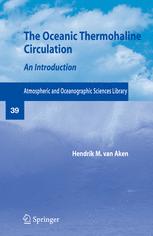

Most ebook files are in PDF format, so you can easily read them using various software such as Foxit Reader or directly on the Google Chrome browser.
Some ebook files are released by publishers in other formats such as .awz, .mobi, .epub, .fb2, etc. You may need to install specific software to read these formats on mobile/PC, such as Calibre.
Please read the tutorial at this link: https://ebookbell.com/faq
We offer FREE conversion to the popular formats you request; however, this may take some time. Therefore, right after payment, please email us, and we will try to provide the service as quickly as possible.
For some exceptional file formats or broken links (if any), please refrain from opening any disputes. Instead, email us first, and we will try to assist within a maximum of 6 hours.
EbookBell Team

5.0
110 reviewsThe Oceanic Thermohaline Circulation: An Introduction
Hendrik M. van Aken
Royal Netherlands Institute for Sea Research, Department of Physical Oceanography, Texel, The Netherlands
In this book different aspects of the oceanic thermohaline circulation, the dominant meridionally overturning mode of the global ocean circulation, are presented. That part of the ocean circulation is generally assumed to be driven by the meridional density gradients in the ocean, related to differences in temperature and salinity. This circulation is often considered to be a key process for the global meridional heat transport and a dominant factor in rapid climate change. The topics, presented in this book, are the aspects of thermodynamics of seawater and geophysical fluid dynamics that are important for the understanding of this current system, basic observational hydrographic methods to study the thermohaline circulation, and a description of the thermohaline circulation, based on observational evidence. This includes the deep circulation in the abyssal basins, global deep upwelling, the shallow return flow to high latitudes, and the formation and descent of high-density deep water masses in these cold regions. Theoretical models for the lateral structure of the abyssal circulation, the deep upwelling, turbulent mixing and energy requirements of the thermohaline circulation are discussed. Wherever possible, observational evidence for such models is also presented. With the use of very simple one-dimensional and box models ideas with regard to relation between the boundary conditions at the ocean-atmosphere interface and the strength and stability of the overturning rate of the thermohaline circulation are presented, as well as the basics for the formulation of more complex models of the thermohaline circulation in two and three dimensions. The relation between climate variability and the thermohaline circulation is illustrated with the results of computer simulations as well as with paleoceanographic evidence.
To make this book accessible for students with a variety of backgrounds, the mathematics used in this book is kept quite simple. Only some basic knowledge of differential and integral reckoning is required. The observational data on the thermohaline circulation, presented in this book, are mainly derived from recent oceanographic experiments, in particular observations collected during the World Ocean Circulation Experiments from the 1990s. The World Wide Web addresses, where these data can be found, are also given, to encourage the readers to download data for practice and further analysis.
This book is intended to be used by advanced undergraduates and graduate students in physical oceanography, climatology, geography and environmental sciences, paleoceanography, marine biology and marine chemistry. It should fill the gap between most textbooks on general oceanography and the specialized papers in scientific journals.